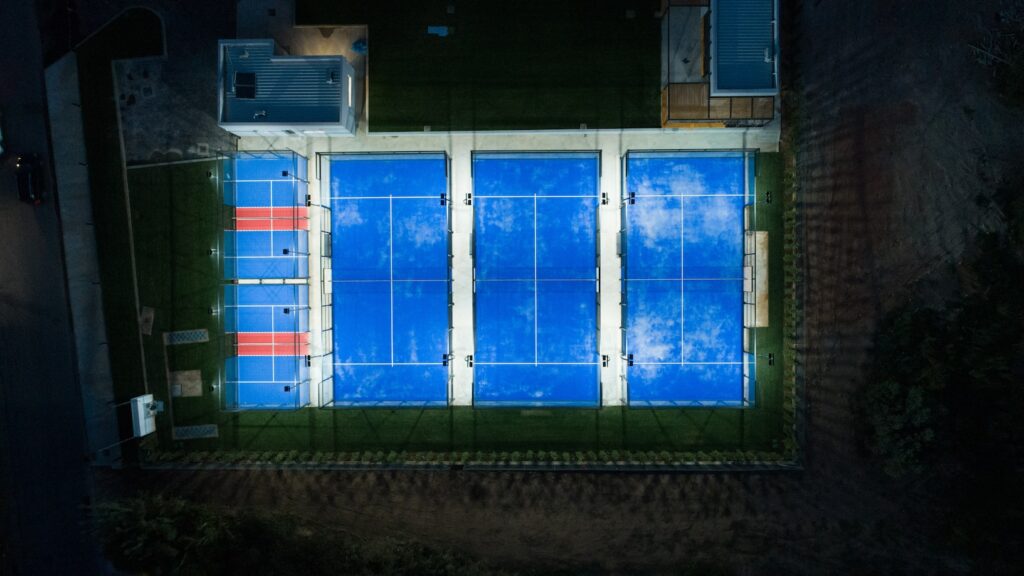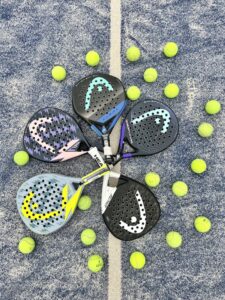Ace Your Game: 5 Proven Strategies to Adapt to Padel Court Size Like a Pro
3 min read
Ace Your Game: 5 Proven Strategies to Adapt to Padel Court Size Like a Pro
Greetings my fellow padel enthusiasts! Today, we are going to dive into the exciting world of adapting to padel court size like a true pro. Whether you’re a beginner or a seasoned player, understanding and mastering the unique dimensions of a padel court is crucial for dominating the game. So, grab your racket and let’s get started on how to adapt to padel court size!
1. Embrace the Dimensions
When stepping onto a padel court, the first thing you must do is embrace the dimensions. Unlike traditional tennis courts, padel courts are smaller and enclosed by walls. These walls, while intimidating to some, can be your best friends if you know how to use them to your advantage.
By adapting to the padel court size, you can exploit the shorter dimensions to strategically place your shots. For instance, aiming your serve towards the corners can force your opponent into difficult positions, giving you the upper hand. Remember, it’s not about the power; it’s about precision!
2. Master the Art of Angles
One of the unique aspects of padel is the importance of angles. Due to the smaller court size, it becomes crucial to master the art of angles. Instead of relying solely on power, focus on controlling the direction and depth of your shots.
Try hitting the ball at an angle to make it difficult for your opponent to reach. Aim for the corners, force them to take awkward positions, and keep them on their toes. By using angles effectively, you can create opportunities to score points and keep your opponents guessing.
3. Play Close to the Walls
Unlike tennis, where hitting the ball out of bounds leads to losing the point, padel allows you to use the walls to your advantage. So, why not take full advantage of them? Playing close to the walls can disrupt your opponent’s rhythm, as it forces them to react quickly to the rebounds.
Use the walls as your allies by playing close to them and sending the ball on tricky trajectories. This not only adds an element of surprise to your shots but also forces your opponent to make quick decisions, increasing the probability of errors from their end.
4. Focus on Smarter Shot Selection
Adapting to padel court size requires you to develop a laser-sharp focus when it comes to shot selection. Make sure to assess the court dimensions before each shot and choose wisely. Opt for shots that are difficult to return due to the limited space your opponent has.
If you’re close to the net, consider a drop shot to catch your opponent off guard. If you’re farther away, a deep lob can push them back and give you ample time to reclaim your position. It’s all about playing smart and strategically to gain that edge over your opponent.
5. Communication is Key
Last but certainly not least, communication plays a vital role in adapting to padel court size. Unlike singles tennis, padel is a doubles game that requires constant coordination with your partner. By communicating effectively, you can cover more ground, anticipate the opponent’s moves, and avoid unnecessary collisions.
Develop signals, use verbal cues, and establish a seamless understanding with your partner. This will enable you to strategize better and dominate the court as a cohesive unit. Remember, a strong partnership leads to a stronger game!
So there you have it, my dear readers. Five proven strategies to adapt to padel court size like an absolute pro. Embrace the dimensions, master angles, make use of the walls, focus on smart shot selection, and communicate with your partner. By incorporating these strategies into your game, you’ll be hitting aces and leaving your opponents in awe in no time!
Now, grab your racket and step onto the padel court with confidence. Show the world your skills and let the game begin!







